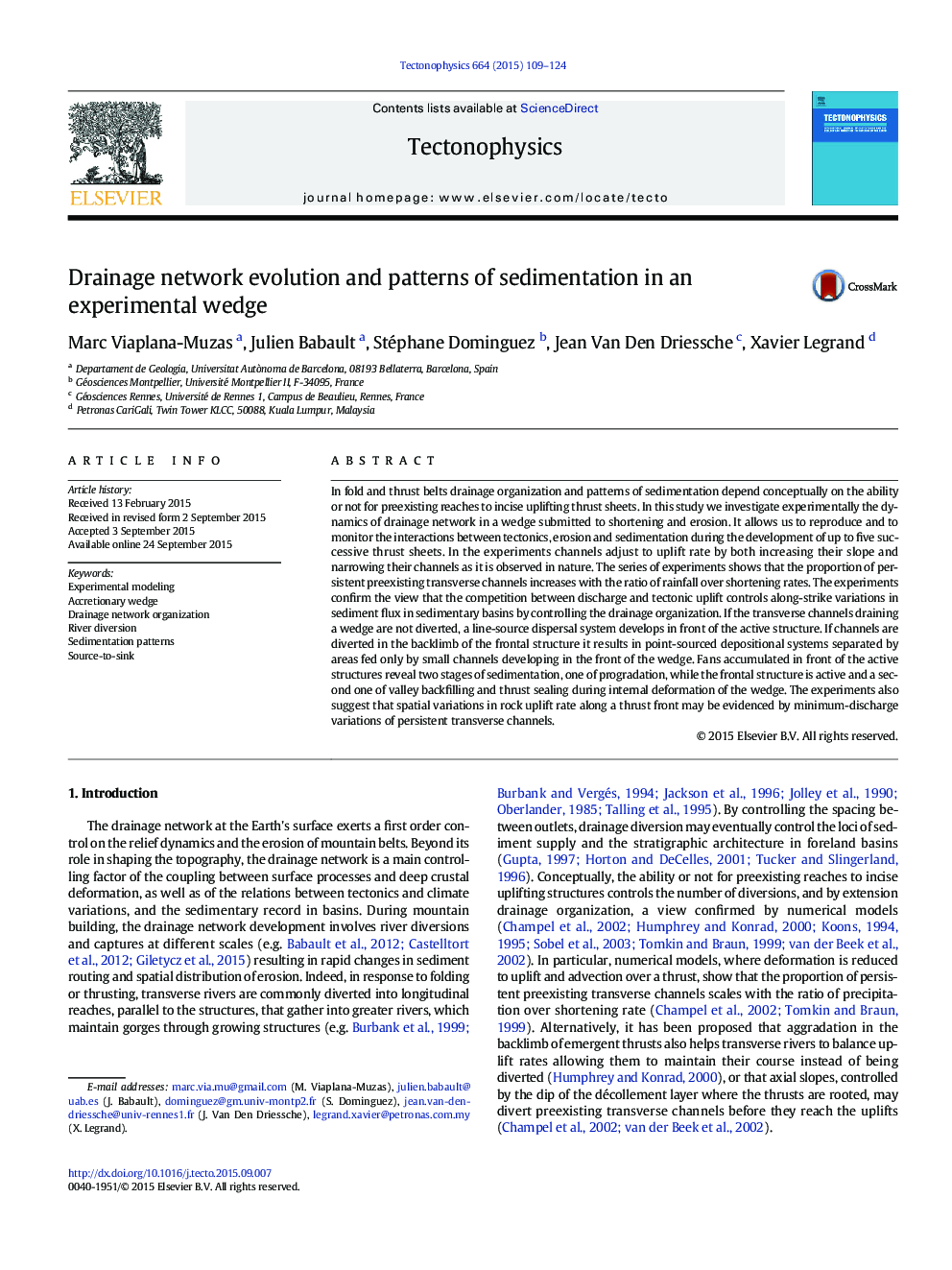| کد مقاله | کد نشریه | سال انتشار | مقاله انگلیسی | نسخه تمام متن |
|---|---|---|---|---|
| 6433588 | 1636731 | 2015 | 16 صفحه PDF | دانلود رایگان |
- Results were obtained from experimental wedges submitted to shortening and rainfall.
- Discharge and uplift control drainage and sedimentation patterns.
- Channel diversions by uplifts result in point-sourced depositional systems.
- Gradients of uplift along a thrust front may be evidenced by transverse channels.
In fold and thrust belts drainage organization and patterns of sedimentation depend conceptually on the ability or not for preexisting reaches to incise uplifting thrust sheets. In this study we investigate experimentally the dynamics of drainage network in a wedge submitted to shortening and erosion. It allows us to reproduce and to monitor the interactions between tectonics, erosion and sedimentation during the development of up to five successive thrust sheets. In the experiments channels adjust to uplift rate by both increasing their slope and narrowing their channels as it is observed in nature. The series of experiments shows that the proportion of persistent preexisting transverse channels increases with the ratio of rainfall over shortening rates. The experiments confirm the view that the competition between discharge and tectonic uplift controls along-strike variations in sediment flux in sedimentary basins by controlling the drainage organization. If the transverse channels draining a wedge are not diverted, a line-source dispersal system develops in front of the active structure. If channels are diverted in the backlimb of the frontal structure it results in point-sourced depositional systems separated by areas fed only by small channels developing in the front of the wedge. Fans accumulated in front of the active structures reveal two stages of sedimentation, one of progradation, while the frontal structure is active and a second one of valley backfilling and thrust sealing during internal deformation of the wedge. The experiments also suggest that spatial variations in rock uplift rate along a thrust front may be evidenced by minimum-discharge variations of persistent transverse channels.
Journal: Tectonophysics - Volume 664, 28 November 2015, Pages 109-124
